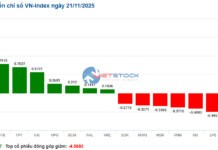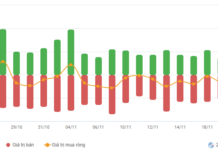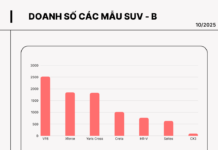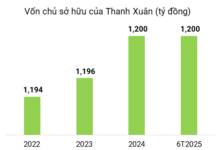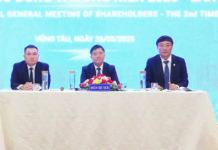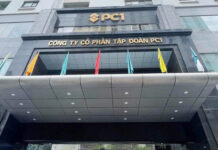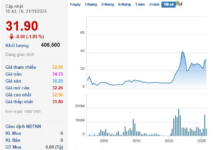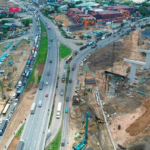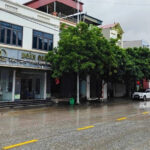Vingroup, a leading conglomerate, has submitted a proposal to the Ho Chi Minh City People’s Committee, seeking approval to study and invest in a sea-crossing road connecting Can Gio and Vung Tau under the Build-Transfer (BT) model.
According to the company, this sea-crossing road will significantly reduce travel time, enhance connectivity between functional areas within Ho Chi Minh City, and foster economic, social, and commercial development while promoting sustainable urban expansion.
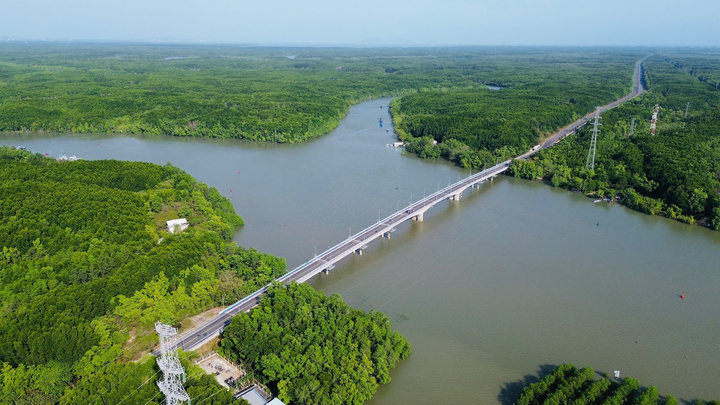
Currently, Can Gio, located approximately 50 km from Ho Chi Minh City’s center, is accessible only via the Binh Khanh ferry to the city center and connected to Vung Tau through the Vung Tau – Can Gio ferry.
Following Ho Chi Minh City’s merger with Ba Ria – Vung Tau and Binh Duong, the need for direct connectivity, especially between coastal areas, has become increasingly urgent. Can Gio – Ba Ria Vung Tau (former) is a strategically important region for maritime economy, ports, tourism, and eco-urban development. However, its current infrastructure is limited, relying heavily on ferries and circuitous routes.
On June 11, 2025, the Prime Minister issued a decision approving the adjusted master plan for Ho Chi Minh City until 2040, with a vision to 2060. This plan emphasizes the development of modern transportation infrastructure and enhanced intra-regional and inter-regional connectivity as a key strategic focus.
“In the spirit of partnering to realize the master plan for key transportation infrastructure, Vingroup requests the Ho Chi Minh City People’s Committee to allow the company to study and invest in the sea-crossing road connecting Can Gio – Ba Ria Vung Tau (former) under the BT model. The group is committed to contributing to the enhancement of regional connectivity and the sustainable development of Ho Chi Minh City’s coastal areas,”
stated Vingroup in its proposal.
The Ministry of Construction has also issued a document (No. 10632) to the Ho Chi Minh City National Assembly Delegation, responding to voters’ suggestions after the 9th session of the 15th National Assembly. Voters proposed that the government expedite the development of Cai Mep – Thi Vai Port into an international transshipment hub and construct a bridge connecting Can Gio – Vung Tau, along with a high-speed railway linking Ho Chi Minh City – Ba Ria – Binh Duong, to leverage transportation connectivity for export-import and logistics.
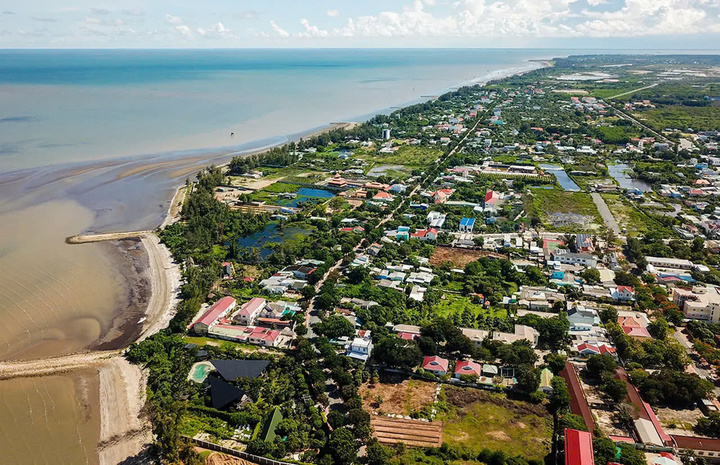
Beyond being Ho Chi Minh City’s green lung, Can Gio is undergoing a transformative phase with numerous infrastructure projects, including a 2,870-hectare land reclamation project with an investment of $11 billion.
In response to the proposal for the Can Gio – Vung Tau bridge, the Ministry of Construction clarified that this route falls within Ho Chi Minh City’s jurisdiction and is not part of the national highway or expressway system managed by the ministry.
The ministry requested the Ho Chi Minh City National Assembly Delegation to consult with the Ho Chi Minh City People’s Committee to study and include this bridge project in the city’s post-merger master plan for 2021-2030, with a vision to 2050, and to lead its implementation according to their authority.
Can Gio holds a strategic position as the southeastern economic hub of Ho Chi Minh City. Numerous significant projects are planned for this area in the future.
In Can Gio, Vingroup recently commenced construction on the Can Gio Sea Tourism Urban Area in April, covering a total area of 2,870 hectares. The project is located at the Long Hoa commune and Can Thanh town (former Can Gio district).
The project is expected to have a significant impact not only on Ho Chi Minh City but also on the growth of the Southeast region, opening up new horizons for national maritime economic development.
In addition to proposing the Can Gio sea-crossing bridge, Vingroup is also suggesting a high-speed railway from Phu My Hung to Can Gio with a design speed of 350 km/h, reducing travel time from Phu My Hung to Can Gio to just 12 minutes.
In the future, Can Gio will also be conveniently connected to Long Thanh International Airport via National Highway 51 and the Ben Luc – Long Thanh Expressway.
In 2026, the Binh Khanh Bridge will begin construction, connecting Can Gio to the city center and reducing the load on the current Binh Khanh ferry.
The Can Gio – Vung Tau Bridge is also planned for investment, reducing the travel time from Vung Tau to Can Gio to just 10 minutes.
Earlier in 2025, the Ho Chi Minh City Department of Transportation and Public Works submitted a document to the Ho Chi Minh City Department of Construction and the consulting consortium for the adjusted master plan, regarding the southern coastal road in the city.
The proposal includes investing in the main route and connecting roads to the Ba Ria-Vung Tau coastal road via the Can Gio sea-crossing bridge (Phase 1). This plan shortens the route by approximately 40 km compared to the original plan, with a total investment of over 55.8 trillion VND.
The idea for the Can Gio sea-crossing bridge was first introduced in 2017 at the Can Gio Development Planning Conference, proposed by the Ho Chi Minh City Real Estate Association (HoREA).
According to the proposal, the bridge will be approximately 17 km long with a clearance height of up to 56 meters, allowing international ships to pass through easily.
In 2019, the former Can Gio District People’s Committee also expressed interest in submitting the Can Gio – Vung Tau sea-crossing bridge project to the Ho Chi Minh City People’s Committee.
Metropolis Rising: A Historic Leap Forward
Ho Chi Minh City is poised to seize a monumental opportunity to expand its market, enhance investment appeal, and integrate infrastructure, thereby elevating its global standing.
Complexest Interchange of Ho Chi Minh City’s Ring Road 3 Project to Open by Year-End, Boosting Surrounding Real Estate Projects
Prime real estate projects strategically located along key transportation arteries such as Ring Road 3, Ring Road 4, the Tan Van interchange, the expanded National Highway 13, the Bien Hoa – Vung Tau Expressway, and the HCMC – Thu Dau Mot – Chon Thanh Expressway are poised for a significant price surge by year-end.
Unraveling Land Valuation Challenges in Ho Chi Minh City’s Thu Thiem Eco Smart City Project
The Thu Thiem Eco Smart City project, which granted land allocation to Lotte Group in October 2022, faced legal challenges during the process of hiring a consultant to determine land pricing. Following the issuance of Decree 71 by the Government on August 1, 2024, Ho Chi Minh City promptly adhered to the prescribed procedures, completing the process within a remarkably short timeframe.
Ho Chi Minh City Proposes Canceling Auction of Nearly 1,000 Resettlement Apartments
Homes and land designated for resettlement in Ho Chi Minh City are currently in a state of both surplus and shortage. Over the past year, the allocation rate for resettlement housing and land has reached only 11%.

